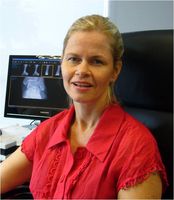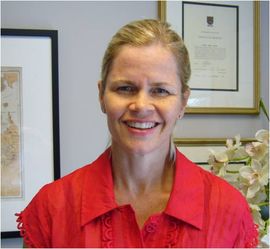Central Auckland, East Auckland, North Auckland, South Auckland, West Auckland > Private Hospitals & Specialists >
Helen Rawlinson - Orthopaedic and Foot & Ankle Surgeon
Private Service, Orthopaedics
Today
8:30 AM to 5:00 PM.
Description
- Sports / trauma related injury to the foot and ankle
- Arthroscopic and open surgery
- Ligament reconstructive surgery
- Tendon repairs and reconstructions
- Rebalancing / realignment surgery
- Degenerative disorders of the foot and ankle
- Arthroscopic debridement
- Realignment surgery
- Fusion / arthrodesis
- Ankle replacement
- Sports and degenerative disorders of the knee
- Arthroscopic meniscectomy
- Knee replacement.
Consultants
-

Dr Helen Rawlinson
Foot & Ankle Orthopaedic Surgeon
Referral Expectations
You need to bring with you to your appointment:
Hours
8:30 AM to 5:00 PM.
| Mon – Fri | 8:30 AM – 5:00 PM |
|---|
Public Holidays: Closed Auckland Anniversary (26 Jan), Waitangi Day (6 Feb), Good Friday (3 Apr), Easter Sunday (5 Apr), Easter Monday (6 Apr), ANZAC Day (observed) (27 Apr), King's Birthday (1 Jun), Matariki (10 Jul), Labour Day (26 Oct).
Christmas: Open 22 Dec — 24 Dec. Closed 25 Dec — 28 Dec. Open 29 Dec — 31 Dec. Closed 1 Jan — 4 Jan. Open 5 Jan — 9 Jan.
Procedures / Treatments
Please use the following links to read more information: Arthroscopic and open surgery Ligament reconstructive surgery Tendon repairs and reconstructions Rebalancing / realignment surgery
Please use the following links to read more information: Arthroscopic and open surgery Ligament reconstructive surgery Tendon repairs and reconstructions Rebalancing / realignment surgery
Service types: Arthroscopy (keyhole surgery), Tendon repair, Soft tissue (muscles, tendons and ligaments), Foot and ankle surgery.
Please use the following links to read more information:
- Arthroscopic and open surgery
- Ligament reconstructive surgery
- Tendon repairs and reconstructions
- Rebalancing / realignment surgery
Please use the following links to read more information: Arthroscopic debridement Realignment surgery Fusion / arthrodesis Ankle replacement
Please use the following links to read more information: Arthroscopic debridement Realignment surgery Fusion / arthrodesis Ankle replacement
Service types: Arthroscopy (keyhole surgery), Ankle replacement, Foot and ankle surgery.
Please use the following links to read more information:
Please use the following links to read more information: Arthroscopic meniscectomy Knee replacement
Please use the following links to read more information: Arthroscopic meniscectomy Knee replacement
Service types: Knee arthroscopy, Knee meniscus surgery, Knee surgery, Knee replacement.
Please use the following links to read more information:
For elderly patients joint replacement surgery is commonly required to treat damaged joints from wearing out, arthritis or other forms of joint disease including rheumatoid arthritis. In these procedures the damaged joint surface is removed and replaced with artificial surfaces normally made from metal (chromium cobalt alloy, titanium), plastic (high density polyethelene) or ceramic which act as alternate bearing surfaces for the damaged joint. These operations are major procedures which require the patient to be in hospital for several days and followed by a significant period of rehabilitation. The hospital has several ways of approaching the procedure for replacement and the specifics for the procedure will be covered at the time of assessment and booking of surgery. Occasionally blood transfusions are required; if you have some concerns raise this with your surgeon during consultation.
For elderly patients joint replacement surgery is commonly required to treat damaged joints from wearing out, arthritis or other forms of joint disease including rheumatoid arthritis. In these procedures the damaged joint surface is removed and replaced with artificial surfaces normally made from metal (chromium cobalt alloy, titanium), plastic (high density polyethelene) or ceramic which act as alternate bearing surfaces for the damaged joint. These operations are major procedures which require the patient to be in hospital for several days and followed by a significant period of rehabilitation. The hospital has several ways of approaching the procedure for replacement and the specifics for the procedure will be covered at the time of assessment and booking of surgery. Occasionally blood transfusions are required; if you have some concerns raise this with your surgeon during consultation.
For elderly patients joint replacement surgery is commonly required to treat damaged joints from wearing out, arthritis or other forms of joint disease including rheumatoid arthritis. In these procedures the damaged joint surface is removed and replaced with artificial surfaces normally made from metal (chromium cobalt alloy, titanium), plastic (high density polyethelene) or ceramic which act as alternate bearing surfaces for the damaged joint.
These operations are major procedures which require the patient to be in hospital for several days and followed by a significant period of rehabilitation. The hospital has several ways of approaching the procedure for replacement and the specifics for the procedure will be covered at the time of assessment and booking of surgery.
Occasionally blood transfusions are required; if you have some concerns raise this with your surgeon during consultation.
Osteotomy is the division of a crooked or bent bone to improve alignment of the limb. These procedures normally involve some form of internal fixation, such as rods or plates, or external fixation which involves external wires and pins to hold the bone. The type of procedure for fixation will be explained when the surgery is planned.
Osteotomy is the division of a crooked or bent bone to improve alignment of the limb. These procedures normally involve some form of internal fixation, such as rods or plates, or external fixation which involves external wires and pins to hold the bone. The type of procedure for fixation will be explained when the surgery is planned.
Osteotomy is the division of a crooked or bent bone to improve alignment of the limb.
These procedures normally involve some form of internal fixation, such as rods or plates, or external fixation which involves external wires and pins to hold the bone. The type of procedure for fixation will be explained when the surgery is planned.
A large number of orthopaedic procedures on joints are performed using an arthroscope, where a fibre optic telescope is used to look inside the joint. Through this type of keyhole surgery, fine instruments can be introduced through small incisions (portals) to allow surgery to be performed without the need for large cuts. This allows many procedures to be performed as a day stay and allows quicker return to normal function of the joint. Arthroscopic surgery is less painful than open surgery and decreases the risk of healing problems. Arthroscopy allows access to parts of the joints which can not be accessed by other types of surgery.
A large number of orthopaedic procedures on joints are performed using an arthroscope, where a fibre optic telescope is used to look inside the joint. Through this type of keyhole surgery, fine instruments can be introduced through small incisions (portals) to allow surgery to be performed without the need for large cuts. This allows many procedures to be performed as a day stay and allows quicker return to normal function of the joint. Arthroscopic surgery is less painful than open surgery and decreases the risk of healing problems. Arthroscopy allows access to parts of the joints which can not be accessed by other types of surgery.
A large number of orthopaedic procedures on joints are performed using an arthroscope, where a fibre optic telescope is used to look inside the joint. Through this type of keyhole surgery, fine instruments can be introduced through small incisions (portals) to allow surgery to be performed without the need for large cuts. This allows many procedures to be performed as a day stay and allows quicker return to normal function of the joint.
Arthroscopic surgery is less painful than open surgery and decreases the risk of healing problems. Arthroscopy allows access to parts of the joints which can not be accessed by other types of surgery.
In many cases tendons will be lengthened to improve the muscle balance around a joint or tendons will be transferred to give overall better joint function. This occurs in children with neuromuscular conditions but also applies to a number of other conditions. Most of these procedures involve some sort of splintage after the surgery followed by a period of rehabilitation, normally supervised by a physiotherapist.
In many cases tendons will be lengthened to improve the muscle balance around a joint or tendons will be transferred to give overall better joint function. This occurs in children with neuromuscular conditions but also applies to a number of other conditions. Most of these procedures involve some sort of splintage after the surgery followed by a period of rehabilitation, normally supervised by a physiotherapist.
In many cases tendons will be lengthened to improve the muscle balance around a joint or tendons will be transferred to give overall better joint function. This occurs in children with neuromuscular conditions but also applies to a number of other conditions.
Most of these procedures involve some sort of splintage after the surgery followed by a period of rehabilitation, normally supervised by a physiotherapist.
Public Transport
The Auckland Transport Journey Planner will help you to plan your journey.
Parking
Free patient parking is provided at both clinics.
At Ascot Office Park, parking can be found by coming into our driveway and turning to the left going down the ramp into the basement. Park between the yellow and black pillars in spaces marked with a yellow sign 'Orthopaedics". These are located immediately to your right on entrance to the basement area.

Contact Details
Cavendish Clinic, 175 Cavendish Drive, Manukau, Auckland
South Auckland
8:30 AM to 5:00 PM.
-
Phone
(09) 523 2768
-
Fax
(09) 869 2677
Healthlink EDI
helenraw
Email
Silverdale Medical Centre, 7 Polarity Rise, Silverdale, Auckland
North Auckland
8:30 AM to 5:00 PM.
-
Phone
(09) 523 2768
-
Fax
(09) 869 2677
Healthlink EDI
helenraw
Email
110 Grafton Road, Grafton, Auckland
Central Auckland
8:30 AM to 5:00 PM.
-
Phone
(09) 523 2768
-
Fax
(09) 869 2677
Healthlink EDI
helenraw
Email
Was this page helpful?
This page was last updated at 11:59AM on December 6, 2023. This information is reviewed and edited by Helen Rawlinson - Orthopaedic and Foot & Ankle Surgeon.
